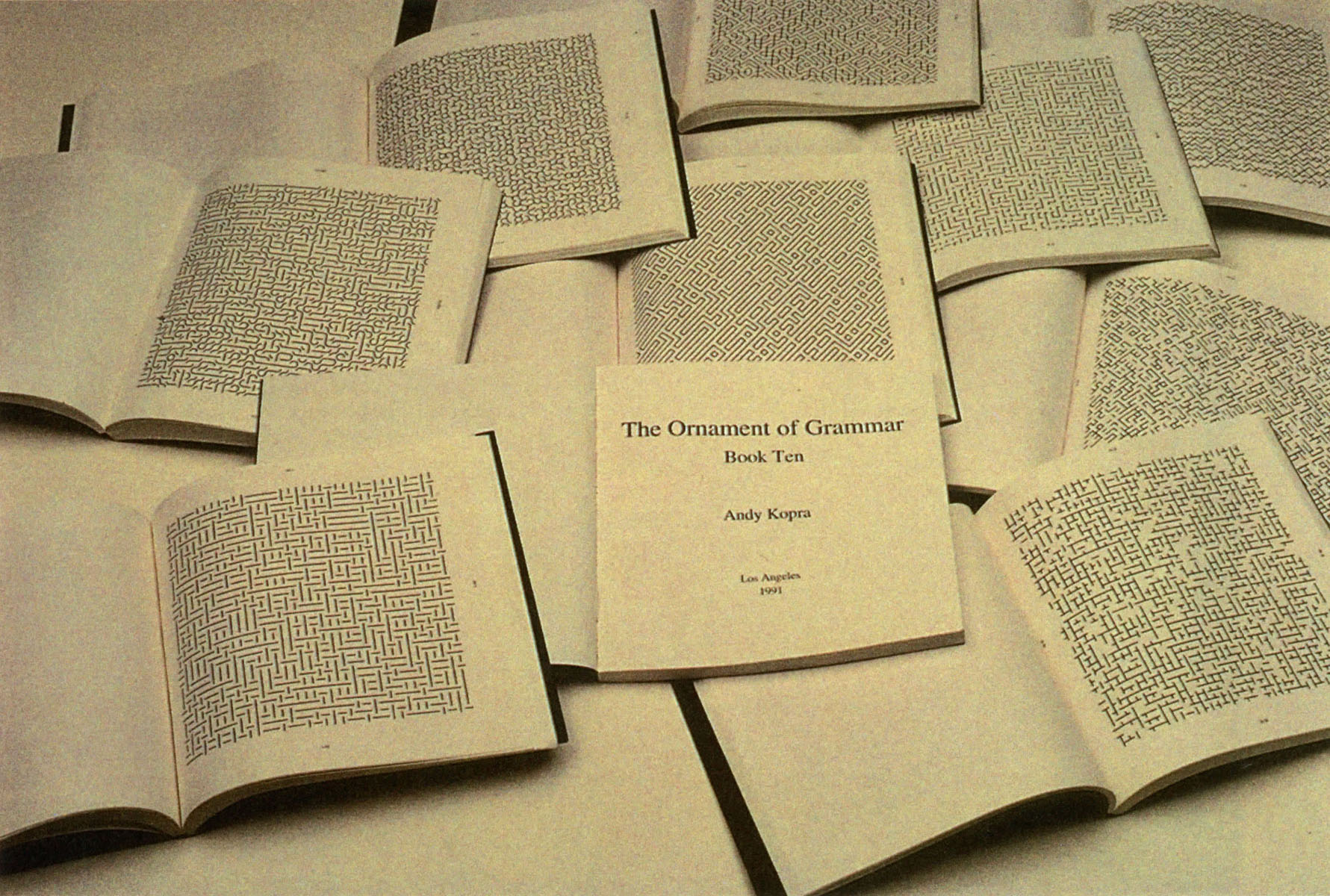Andy Kopra: The Ornament of Grammar
Artist(s):
Title:
- The Ornament of Grammar
Exhibition:
Creation Year:
- 1995
Medium:
- 10 books made from paper
Size:
- 8.5 x 8.5 x .5 inches (each book)
Category:
Artist Statement:
The “Ornament of Grammar” is a set of ten books of one hundred pages each that contain increasingly complex line drawings generated by a computer program. Each drawing is composed of a grid of thirty-six by thirty-six squares containing one of forty-two different patterns, or “tiles.” All tiles connect two, three or four of the midpoints of their edges, so that adjacent tiles can create apparently continuous lines. Individual pages are generated by choosing one tile from a subset of the forty-two for all grid positions. For each book, subsets of the forty-two tiles are defined for specific pages, called “targets.” The subsets used for all other pages are determined by linearly interpolating the probability of choice between the surrounding targets.
The complexity of each successive book is increased by varying three parameters of the generating program. First, the visual quality of the tiles chosen for a book increase in complexity, from straight lines, to right angles, to diagonals, and finally to 90-degree arcs. Second, the number of tiles in a book’s targets increases throughout the books, from two in the first book, to all forty-two in the final book. Third, the number of targets also varies from two to five.
The title, “The Ornament of Grammar,” is a reference to “The Grammar of Ornament,” a compilation of decorative patterns from various cultures compiled by Owen Jones in the nineteenth century. Jones’s work attempts to bring the rational order of empire and the encyclopedist’s myth of completeness to the subjective world of two-dimensional design. As the “reader” attempts to make sense of “The Ornament of Grammar,” however, the possibilities of rationalizing visual imagery are called into question by this encyclopedia of the arbitrary.
But “The Ornament of Grammar” is not merely a critique of Jones’s work. In attempting to reduce the complexity of the visual materials and increase the complexity of the ways in which those materials are used, the work invokes the tradition of Structuralist filmmaking as practiced by Hollis Frampton and others in the 1970s. As one page to the next slowly changes in the probabilities of the chosen tiles, we see the surprising appearance of the continuous in the discrete, in which the similarity between pages is created not by appearance, but by the probabilities used in the page’s construction.
“The Ornament of Grammar” by Andy Kopra. Ten books, 100 pages each. Original software by Andy Kopra. Software development in C on a Silicon Graphics Iris workstation at VIFX, Los Angeles. Camera-ready output produced on a NeXT computer and laser printer from PostScript.





